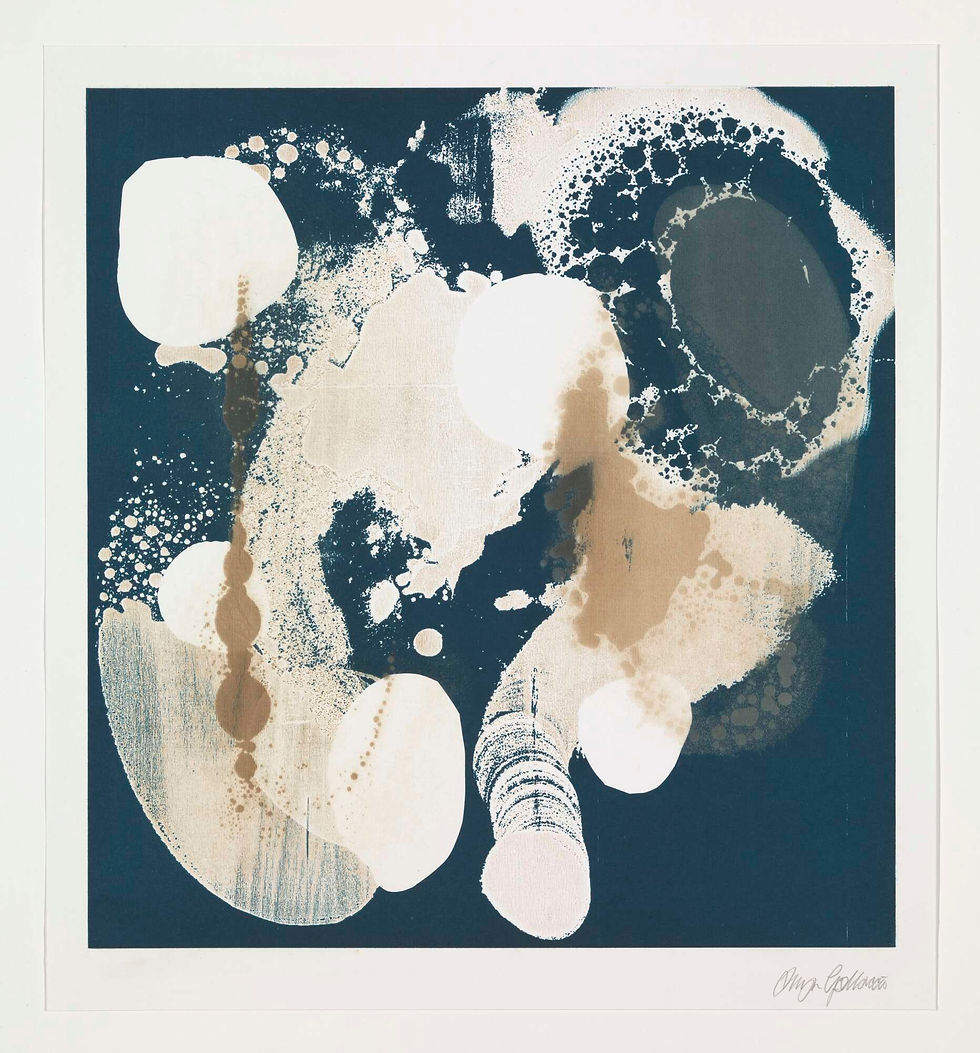Government Art Collection Commissions New Print Based on Whale Song Vibrations
- The Courtauldian
- Oct 7
- 2 min read
Tien Albert, Editor-in-Chief

Scottish artist Anya Gallacio’s eight hours of whale song will be displayed in government buildings and embassies around the world
The Government Art Collection has commissioned a new work by Scottish artist Anya Gallacio entitled eight hours of whale song. The work’s core was devised by playing a YouTube video of 8 hours of whale song through a drum with pigment laid on top, causing it to spread across its surface. Polymath Megan Watts-Hughes pioneered this device, named a Tonoscope, to create works based on her opera singing.
Although the end-product initially appears arbitrary, the rest of the work’s creation was very precise. The final base composition was decided digitally, before being lasered into sheets of plywood. This lasering effectively burnt the plywood, and patches of brown which appear on the final prints are the product of this. Each sheet of plywood can only withstand roughly six impressions. For this reason, each has deteriorated in slightly different ways.
eight hours of whale song is set against a deep blue background, reminiscent of the North Sea which surrounds Dundee, where the prints, of which there are thirty, were produced. This blue is contrasted by striking white patches of negative space, which vary significantly in their texture and relief. A circular patch of white breaks past the barriers of the print in the top right, opening the work’s composition. ‘I wanted that sense of vastness,’ Gallacio told The Courtauldian, emphasising the scale of the sea.
Despite being a print, different impressions of eight hours of whale song have vastly different appearances. As well as the unique grain and appearance of each woodblock, variation between prints is also triggered by the application of self-described ‘blobs’ on the inked up board before its application on paper. When the impression is taken, the blobs, which are cutouts of some of the patterns formed by the Tonoscope process, keeps areas of paint off the paper. ‘I kept forgetting which way I was putting them,’ Gallacio told us. These imperfections in the handling of the works have been accentuated by the sheer number of steps in the printmaking process. When all thirty are lined up, the gradual wear in the wood’s organic material shows, and the blemishes in each print transition smoothly from one to the other.

This was not Galiccio’s intention. ‘We tortured them in the print shop’, she says, ‘I didn’t realise how difficult it would be [to make each print identical].’ The artist originally tried to find a way to directly translate the song directly to print through the Tonoscope, but this was not possible. The end product still carries the essence of the whale song’s indexical intervention on acetate. Rather than being represented by the ink on the page, the song is physically present in the print.
Anya Gallacio received the Robson Orr TenTen Award for eight hours of whale song. Past winners of the project, which is in the process of commissioning ten artists for the government art collection over ten years, include Yinka Shonibare, Lubaina Himid, and most recently Denzil Forrester. On the morning of 06/10/25, 11 prints remained for sale.












Comments